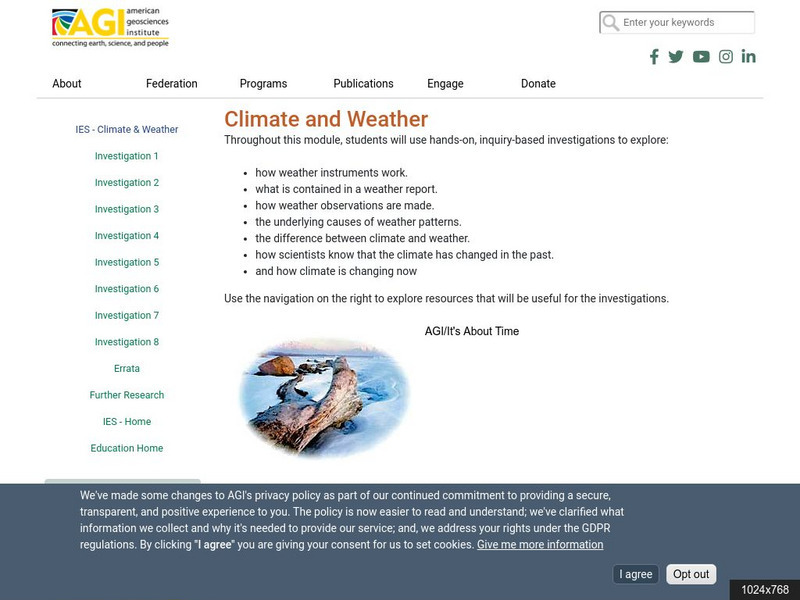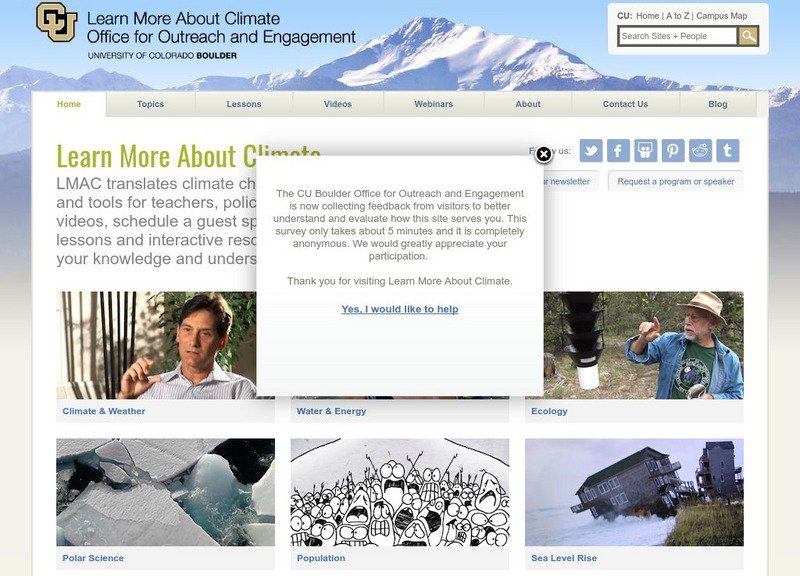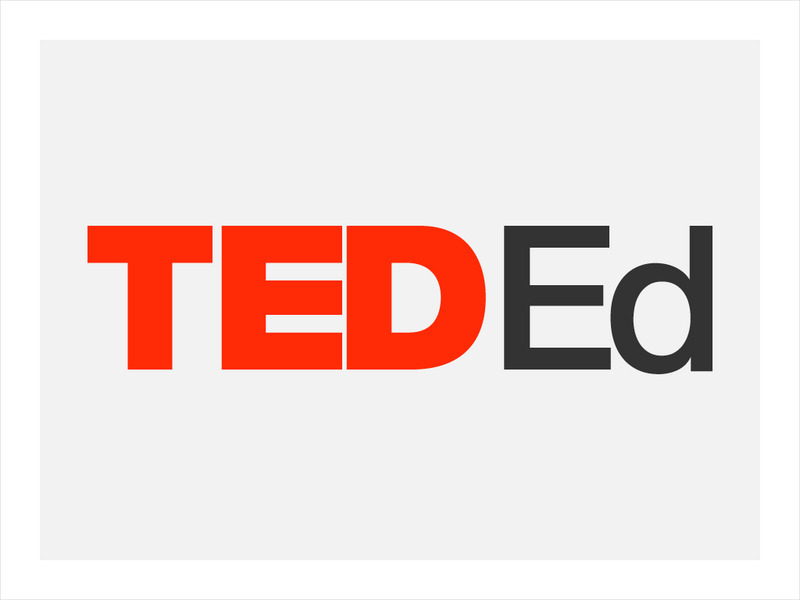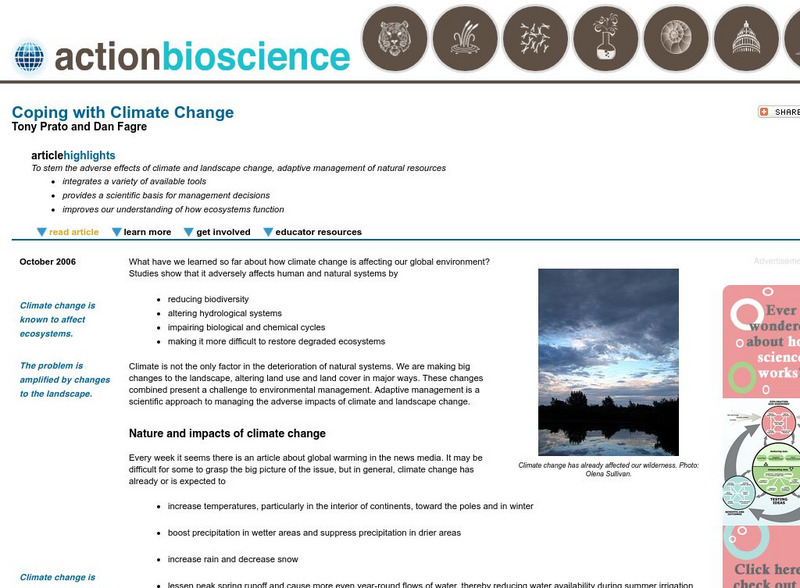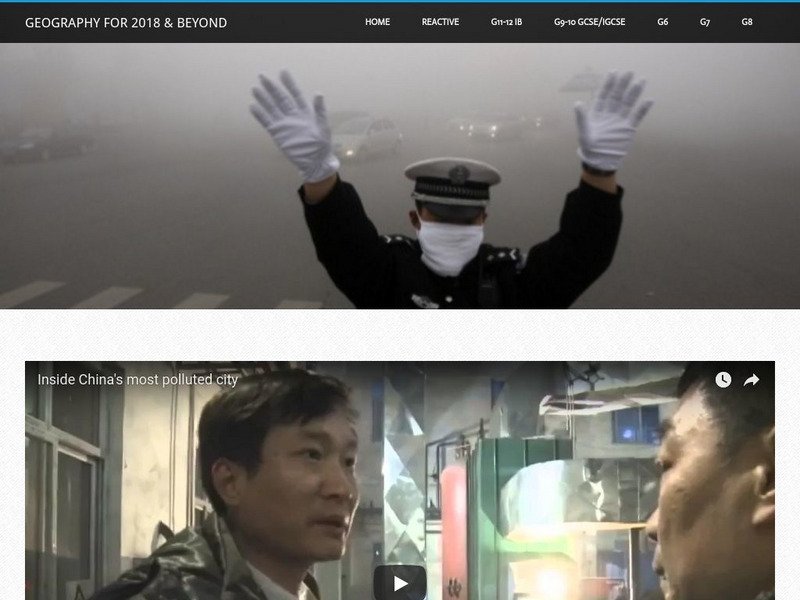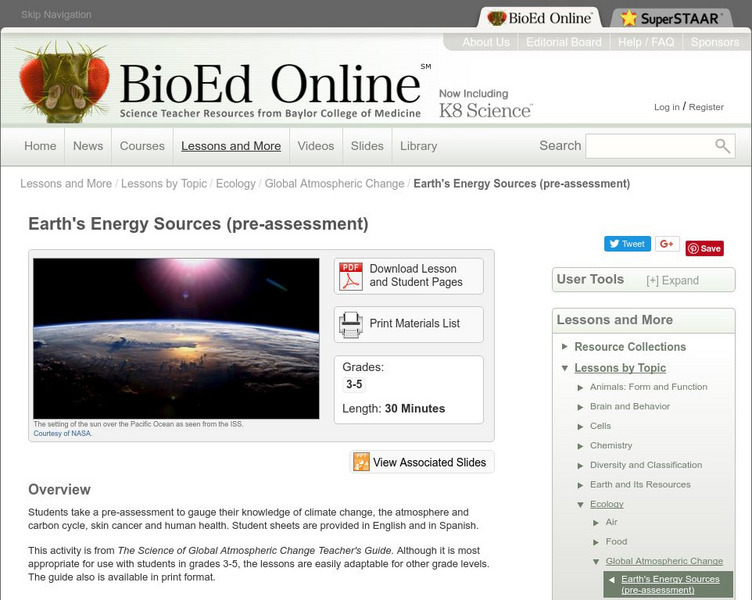American Geosciences Institute
American Geosciences Institute: Climate and Weather
Eight hands-on lessons module in which students explore climate and weather. Inquiry-based investigations include observing weather, weather reporting, weather maps, weather satellites, causes of weather, and climate change.
Georgia Department of Education
Ga Virtual Learning: Air, Atmosphere, and Climate Change
Sixteen essential questions lead student learning about Earth's atmosphere and global warming as they have to do with global climate change.
PBS
Pbs Learning Media: What's Up With the Weather: Graphs
Examine this graph from FRONTLINE/NOVA: "What's Up with the Weather?" Web site to see dramatic increases in three greenhouse gases over the last two hundred years.
Smithsonian Institution
Smithsonian Magazine: Eco Center: The Oceans
Students explore the potential problems and fascinating phenomena of the oceans. Some topics investigated are climate change, nutrient pollution, and fishing. The resource consists of a quiz, slideshows, articles, and video clips.
University of Colorado
University of Colorado: Learn More About Climate
An extensive source of information about climate change and how it is affecting Colorado. Includes videos of interviews with scientists, lesson plans, links to 'green resources' and to sites with scientific information, and a climate...
TED Talks
Ted: Ted Ed: James Balog: Time Lapse Proof of Extreme Ice Loss
In this video, James Balog describes how evidence for glaciers receding due to climate change can be seen through time-lapse photography. [19:20] Includes a brief quiz and a list of additional resources to explore.
TED Talks
Ted: Ted Ed: Lee Hotz: Inside an Antarctic Time Machine
In this video, Lee Hotz describes research into greenhouse gas emissions and global climate change taking place at the South Pole in Antarctica. [9:46] Includes a brief quiz and a list of additional resources to explore.
Woods Hole Oceanographic Institution
Polar Discovery: The Greenland Glacier Expedition: July 7 July 24, 2008
This polar expedition took place in 2008, but you can still experience the thrill of following these scientists as they engage in research studying the changes in Greenland's ice sheet. Meet the research team and learn about the...
Science Education Resource Center at Carleton College
Serc: Exploring Regional Differences in Climate Change
Students create a set of graphs that facilitate comparison of climate change predicted for various states. They also use Microsoft Excel to create a graph showing precipitation data.
Science Education Resource Center at Carleton College
Serc: Is Greenland Melting?
An activity where students monitor the thickness of ice sheets found in Greenland by looking at photographs, map views, and tabular data. During this activity, students will make a conclusion to whether the ice sheets are melting.
Smithsonian Institution
Smithsonian Learning Lab: Prehistoric Climate Change and Why It Matters Today
Introduce students to environmental issues by studying a time of rapid global warming that occurred 50 million years ago. Lessons, video segments and interactive activities will engage students as they learn about average annual...
Smithsonian Institution
Smithsonian Education: Idea Labs: Prehistoric Climate Change
Sort fossil leaves from 55 million years ago into groups with smooth or 'toothed' edges. Then, use a formula to calculate the percentage of each type and, from there, look at how high the temperature might have risen when global warming...
American Institute of Biological Sciences
Action Bioscience: Coping With Climate Change
This article highlights the significance of responsible management of natural resources in an effort to curb the effects of our shifting climate.
Choices Program, Brown University
Choices: Teaching With the News Negotiating Climate Change: Paris 2015
Multi-media learning module includes video, handouts and primary source material, from which students examine the need for world policy on climate change and identify key issues in the Paris climate change negotiations.
Geographypods
Geographypods: Theme 3: Economic Development: Environmental Risks and Benefits
This learning module looks at the impact of economic development on the environment. It begins with a look at a serious pollution problem in China, then looks at waste reduction and climate change. Includes an animation, images, and videos.
PBS
Pbs Learning Media: Greenland Mass Variation Since 2002
Scientists study ice sheets because they influence weather and climate, playing a role in atmospheric and ocean circulation. Ice sheets can also have huge impacts on global sea levels because they store so much water. Explore this...
PBS
Pbs Learning Media: What Is Albedo?
When light strikes an object it can cause reflection or absorption depending on the wavelength of the light and the property of the material that makes up the object. Watch this whiteboard animation for a full explanation and to find out...
PBS
Pbs Learning Media: Albedo Decrease Linked to Vanishing Arctic Sea Ice
Examine this visualization by NASA to understand how the warming of the Arctic region has caused the sea ice extent to decline by 40%, thereby throwing our earth's energy budget off balance. Extensive resources included are teaching...
PBS
Pbs Learning Media: Link Between Arctic Sea Ice and Solar Radiation Absorbed
The Arctic plays an important role in regulating Earth's climate. The region reflects much of the Sun's energy and helps keep the planet cool. Data collected by NASA have revealed that sea ice in the Arctic has steadily declined over the...
BioEd Online
Bio Ed Online: Earth's Energy Sources (Pre Assessment)
A pre-assessment at the beginning of a unit on global atmospheric change. It checks understanding of issues around climate change and the impact it has on the environment and on human health. The lesson and accompanying slideshow can...
BioEd Online
Bio Ed Online: Greenhouse S'mores
Students learn about climate change as they investigate how different materials are affected by a greenhouse effect. The lesson and accompanying PowerPoint can both be downloaded.
BioEd Online
Bio Ed Online: Everyone Counts (Post Assessment)
A post-assessment at the end of a unit on global atmospheric change. Students write persuasive letters about an issue related to it, e.g., the greenhouse effect or ozone loss. The letters encourage the recipient to protect the atmosphere...
BioEd Online
Bio Ed Online: Using Heat From the Sun
Students investigate how solar energy can be harnessed to heat water. The lesson and accompanying PowerPoint can both be downloaded, and the student handout is provided in both English and Spanish.
Ohio State University
Osu: Beyond Weather and the Water Cycle: The Sun: Earth's Primary Energy Source
Extensive article that discusses the first principle of climate science, i.e., that the Sun is the primary energy source for the climate system of the Earth. Presents five concepts for this principle and explains each, providing...


